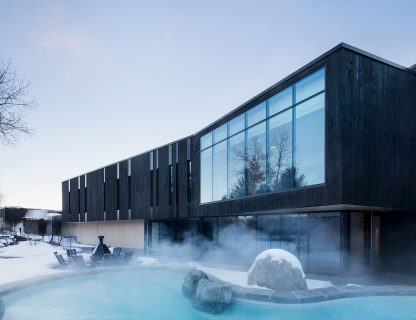Connection, with oneself and others, is a powerful energy channel. Thanks to it, we can build ourselves, grow, and flour- ish. It is a form of taking root, horizontally as well as vertically, that allows for both anchoring and expansion.
It is important to understand that to be able to connect, with oneself but also with others, it is necessary to be able to be present. We are talking about mental presence: having the ability to pay attention to a single thing, a single event, a single person, a single moment. To what is happening in the present moment.
Have you ever noticed that, when someone is talking to you, your mind is somewhere else? When you are performing a task, your ideas and thoughts wander endlessly until you can no longer even focus on what you are doing? If this is the case, you may have difficulty being present. This is where mindfulness comes into play.

MiNDFULNESS
By definition, mindfulness is the fundamental ability to be fully present. To be aware of where we are and what we are doing while not reacting to what is happening around us. It means welcoming our thoughts, emotions, and sensations without judging or qualifying them.
More traditionally, mindfulness refers to a clear mind inclined to respond effectively and objectively to what life brings us in order to be able to make the best possible choices. A kind of extremely objective and lucid state.
According to this definition, mindfulness allows us to be 100% present for ourselves, but also for others, in order to enable a real connection. This is a quality and a potential that each human being possesses, but it is necessary to learn how to cultivate it. Everyone can therefore practise it and achieve the desired state of presence with a little patience.
THE BENEFITS OF THIS PRACTIce
By focusing on the present moment, the mind succeeds in dispelling the current of overabundant thoughts. Indeed, studies1 show that the ability to live in the present moment mitigates certain depressive effects related to thoughts of the past and reduces the anxiety that worrying anticipation of the future can cause. “Here, now” is the neutral and peaceful state of clarity of mind.
Mindfulness allows us to be focused when someone speaks to us, reduces spontaneous emotional reactions to subjects that might be sensitive, increases objectivity and cognitive flexibility, and makes us more empathetic. The goal of all this is to develop attention, kindness, acceptance, and compassion and therefore equip ourselves to better connect with others.
AN INDIVIDUAL QUEST AT THE HEART OF THE EXERCISe
Mindfulness work makes it possible to train the mind to channel its attention on one single thing and to put all its energy into it. It is possible to do so in several ways that are more or less restrictive.
On a daily basis, mindfulness can be practised at any time in an informal way: in the shower, walking to work, eating, on the bus. The principle is to isolate the moment and to be receptive to everything around us: the colours (of the sky, the leaves, the ground, the walls, foods), the sounds (of cars, birds, foods when we cut them), the odours (of cooking, grass, flowers), and the sensations (of water on our skin, the wind, the heat of the sun).
More traditionally, meditation is an essential part of mindfulness work. It allows us to practise focusing our thoughts on one single thing while the body is stationary and the environment is calm, even silent. Meditation can be traditional, guided, or body scan-type (which consists of a quick analysis of your body and the sensations associated with it). It is also possible to do breath-focused meditations where breathing and meditation techniques meet. If you are unfamiliar with meditation, guided meditation is an accessible approach that facilitates the process of discovery and helps you develop tools to anchor yourself in the present moment. It is always easier, as in any learning process, to be supported and guided in the actions that are proposed to us than to embark on them blindly. Indeed, meditation is a form of training, but for the mind.

THE COnNECTION ASSOCIATED WITH OUR RELATIONSHIPS
Now, how can we use mindfulness to improve the quality of our relationships?
One of the ways to develop connection with others in a conversational context is active listening. Through your total presence, this technique allows your conversation partner to feel that you are listening attentively to them, but especially that you are absorbing what they are saying to you in such a way as to interpret and evaluate their words without interrupting them, and above all, without judging them. Your presence will allow you to read the subtexts, grasp the non-verbal cues, and focus on the intention of their statements.
Indeed, by starting to give all your attention to the person with whom you wish to enter into a relationship, it will already be clear to them that you care about them. Caring about someone and being attentive to them increases the sense of belonging and helps deepen the connection. This is a factor that may seem intangible, but which has a great impact on our relationships with others.
For your part, mindfulness will allow you to focus on your exchanges objectively in order to avoid making connections with your own experiences and your own baggage. That way, no matter what is shared, you won’t be trying to be right, and you won’t react strongly to what you are told, such as if the subject evokes memories or feelings in you that are part of your story, which are your truth, but not necessarily everyone’s truth. That way, you will succeed in being present for others without bringing all the attention back to your own feelings.
In concrete terms, active listening means listening deeply to the other person’s words, without interruption, without having to fill silences, without offering your own perspective (unless the other person asks you to do so), and without making connections to your own experience. This approach may seem counterintuitive to some people, but you should know that in an era where everyone gives their opinion on everything, it is sometimes essential to leave space for others to express themselves and simply be actively listened to. This space offers the per- son across from you the opportunity to reach the end of their thoughts, to develop their thinking by speaking, and to share more than if they were constantly interrupted.
Mindfulness is a broad concept that applies to all spheres of our lives. What matters here is using the tools that are available to us to develop our ability to dispel the overflow of information in order to make ourselves available to the people around us and to offer them the gift of our full presence… This is where the secret of connection hides
Acte is a 100%-Francophone multidisciplinary training studio. It offers collections of pre-recorded training sessions and structured programs to be explored without geographic or time constraints. Acte breaks away from the cult of the body to find its inspiration in the curiosity of movement, fun in training, and progress in discipline. Their goal is to introduce clients to functional training so that they can develop their knowledge of their body and the source of their motivations. At Acte, we don’t aim for the perfection of the body, nor that of the mind. Instead, we cultivate strength and grace, intensity and slowness, balance and movement.




